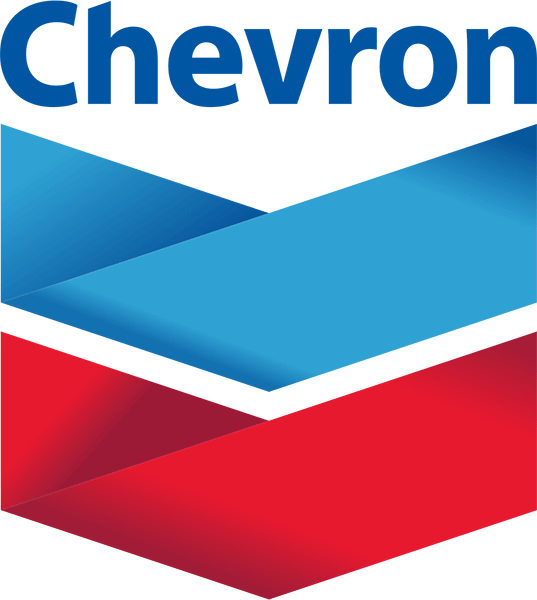Financial Planning for Chevron Employees
While working at Chevron, you may have questions regarding the specifics of the plans and benefits available to you. By coordinating your benefits with your outside investments my team can help you understand each option to maximize your benefits and create a strategic plan for retirement.


Planning Retirement from Chevron
Most people only retire once, so developing a strategy to navigate retirement without leaving money on the table is imperative. We will walk you through the many options to correctly handle all possible elections aiming to maximize your benefits and minimize taxes.
Some of the most common questions are:
- Do I use utilize NUA with my ESOP shares?
- How much should I contribute and where?
- When should you take Social Security?
- Should you take the lump sum payout or the pension?
- When is the most opportune time to retire?
- How should your investment strategy change in retirement?
- When and how much should I withdraw monthly?
NUA opportunities for your Chevron stock
Typically, the NUA option is primarily used for your ESOP shares but can also be used on common stock in certain circumstances. The predominant reasons for utilizing NUA are tax savings, increasing your assets outside of the IRA rollover, and the ability to leave shares to heirs. There are several complexities and rules surrounding NUA, so be sure to work with a professional to execute the strategy.
ESIP Contributions
The IRS has recently released the 2021 retirement plan contribution limits which could benefit the super-savers. Chevron employees can now contribute $19,500 (or $26,000 for those over 50 years old) of pre-tax to the Chevron ESIP. Also, Chevron’s limit on after-tax contributions has increased to $15,300, which means employees can contribute up to $34,800 (or $41,300 for those over 50 years old) between pre-tax and after-tax savings to their Chevron 401(k). No matter when you plan to retire and if you have means, try to focus on maximizing your contributions during your final years at work.
Chevron Pension versus the Lump Sum
Your Chevron Retirement Plan pension can be paid to you as either a lump sum rollover to an IRA or as a monthly annuity. This decision can be a difficult one though we have seen the majority take the lump sum. Every circumstance is different, so it is important to consult an experienced professional who is a retirement specialist, such as we, to assist in your decision.
Your pension/lump sum will be calculated based on your last date of employment and benefits start date. Your total amount is based on 3 factors:
Chevron Benefit Formula:
1.6 percent of your monthly Highest Average Earnings
X
Years of Benefit Accrual Service
minus
Social Security offset
X
Immediate Commencement Discount Factor
Single Life Annuity Assumptions:
- Years of Benefit Accrual Service = 30
- Highest Average Earnings (monthly) = $7,500.00
- Estimated Social Security offset at age 65 (monthly) = $600.00
- Age at Annuity Starting Date = 58 Years
- Immediate Commencement Discount Factor = 0.9
These assumptions are hypothetical and used only for illustrative purposes. Your benefit is based on the factors that apply to you when you start your benefits.
Calculation of Retirement Benefit as a Single Life Annuity
1.6%
X
$7,500
Highest Average Earnings
$120
X
30yrs
Benefit Accrual Service
$3,600
- $600
Social Security offset
$3,000
X
0.9
Immediate Commencement Discount Factor (for retirement at age 58)
$2,700
Monthly Benefit
Lump Sum Payment Option:
This option allows you have your benefit paid as a single lump sum rather than as a monthly annuity. Using the assumptions shown above, here is an example of how your benefit would be calculated under the Lump Sum Payment Option.
Assumptions:
$2,700
Single Life Annuity benefit
58yrs
Age at Annuity Starting Date
186.71
Lump sum conversion factor
These assumptions are hypothetical and used only for illustrative purposes. Your benefit is based on the factors that apply to you when you start your benefits. The lump sum factor shown above is based on January 2017 interest rates. Higher interest rates result in lower lump sum conversion factors; lower interest rates result in higher lump sum conversion factors.
Calculation of a Lump Sum Payment
$2,700
Single Life Annuity
x 186.71
Lump Sum Conversion Factor
$504,117
Benefit payable under Lump Sum Payment Option
Joint and Survivor Annuity Option:
If you want all or part of your monthly benefit to continue to a survivor for his or her lifetime following your death, you can elect the Joint and Survivor Annuity Option.
Using the assumptions shown below, here are examples of how your benefit is calculated under the 50 Percent and 100 Percent Joint and Survivor Annuity Options.


Assumptions
- Single Life Annuity benefit = $2,700
- Member’s age at Annuity Starting Date = 58
- Joint annuitant’s age at Annuity Starting Date = 55
- 50% Joint and Survivor Annuity Option conversion factor = 0.9343
- 100% Joint and Survivor Annuity Option conversion factor = 0.8766
These assumptions are hypothetical and used only for illustrative purposes. Your benefit is based on the factors that apply to you when you start your benefits.
Calculation of 50% Joint and Survivor Annuity
$2,700
Single Life Annuity
X 0.9343
Conversion factor for 50% Joint and Survivor Annuity
$2,552.61
Monthly annuity paid to you for your lifetime
$2,522.61
X 50%
$1,261.31
EQUALS monthly annuity paid to your joint annuitant for his or her lifetime following your death
Calculation of 100% Joint and Survivor Annuity
$2,700
Single Life Annuity
X 0.8766
Conversion factor for 100% Joint and Survivor Annuity Option
$2,366.82
Monthly annuity paid to you for your lifetime
X 100%
$2,366.82
Monthly annuity paid to your joint annuitant for his or her lifetime following your death
Source: Chevron Retirement Benefits Example in the 2017 handbook. https://hr2.chevron.com/Images/2008RetirementHiredBefore010108_tcm36-7289.pdf
As you can see the monthly amount paid for the Joint and Survivor Annuity is about 10% lower than the single life. This is due to the actuarial tables which would be used on both lives, not just an individual.
Choosing your Retirement Date:
You have worked hard for your retirement. After a long career at Chevron, you deserve to enjoy your retirement to the fullest. We know this decision can evoke a multitude of emotions and be overwhelming. Therefore, having someone who is a Chevron retirement specialist is key to make sure the entire process goes smoothly with no hiccups.
A big part of maximizing your retirement enjoyment comes from creating a strategic disbursement of your benefits. By understanding the timing of the payouts and tax implications of your benefits, along with the segment rates, we can determine the most tax-efficient retirement date for you that optimizes your income into your retirement days. While no specific date works for everyone, we have outlined several factors which could potentially affect your retirement figures.
First and foremost: Do you have enough money when combining your ESIP (Fidelity) account along with your lump sum or corresponding monthly payment from annuity?
This obviously is the most important component of when to retire. As I have counseled hundreds over the years, setting the overall total amount needed is imperative to a successful retirement. Once your asset goal is attained then it is time to put forth a real exit plan.
Maximizing the CIP plan is a consideration, but I do not feel it should be too much of a deciding factor.
Since the lump sum is typically a large amount of your total, where the segment rates are extremely important, much more so than the CIP payout. These 3 segment rates are published rates by the IRS and are prominent figures in calculating your retirement benefits. The lower these rates are at your retirement rate the better. Optimally, you would like to retire when the stock price or markets are higher, and rates are low. When you elect the month your benefits will begin, Chevron will look back at what the segment rate averages were 4,5 and 6 months prior to determine the rate used in the lump sum calculation. This can be confusing which is why I am constantly working with current employees on their strategy and running projections to have the most comprehensive and concise figures from which to work.
How many years you have been employed with Chevron along with your age are also the main factors on when you should leave. If you have enough years of service, your full retirement benefit occurs when you reach age 60. Also, the more points you have the higher percentage of your medical benefits are paid by Chevron.
Lastly, if you qualify for Resource Optimization Management (ROM) or Employee Selection Process (ESP) and are not “left standing”, this could provide a springboard to retirement. Receiving a severance can materially change your financial position as you will have the opportunity to delay taking withdrawals from the invested assets.
Whether or not your investment strategy should change during retirement is based on several factors, namely your overall knowledge of the markets, how much you have, and how much you will be spending monthly. One of the many benefits of having an investment advisor is the diversification we can offer from your previous investment options in Fidelity. Couple this with the ability to form a relationship with your advisor generally lends itself to rollover your assets to an advisor who specializes in the management of retirement assets and is familiar with the Chevron paperwork etc.
Withdrawals and Expenses:
One of the most common questions asked is how much can I withdraw monthly? A good measuring stick is to take what your “total” salary is and cut in half. If you are making 140k, then you are more than likely living on 70k (after-taxes) on an annual basis. A good rule of thumb is to withdraw to 5.5% of your overall assets before social security and 4% of less once social security begins. This ratio has consistently proven to be successful due to the long-term overall performance of the markets, but may not be suitable for everyone. You overall balance will consistently fluctuate, but this trend should continue to be successful as it has in the past.
DISCLOSURES:
Investing in securities is speculative and carries a high degree of risk. You should carefully consider your investment objectives, potential risks, advisory fees and expenses before investing.
This presentation is not an offer or a solicitation to buy or sell securities. The information contained in this presentation has been compiled from third party sources and is believed to be reliable; however, its accuracy is not guaranteed. This presentation may not be construed as tax, legal or investment advice and does not give investment recommendations. Any opinion included in this report constitutes our judgment as of the date of this report and are subject to change without notice.
Additional information, including management fees and expenses, is provided on our Form ADV Part 2 available upon request or at the SEC’s Investment Adviser Public Disclosure website, here. Past performance is not a guarantee of future results.
Musso Retirement Advisors it not endorsed or affiliated with Chevron. While we believe this information is accurate, it is the responsibility of the Chevron employee to contact Human Resources for their specific retirement package.
Contact Us
Don't hesitate to get in touch with us.
We would love the opportunity to become your trusted advisor.

Social Security
This is another place where developing a strategy is very specific to each individual or family. Many like to withdraw as soon as possible as they feel as though it may not be available down the road, for medical reasons, or because this source of income is needed for core monthly expenses. The obvious reason to defer until 67 is the +/- 8% increase attained annually by deferring the withdrawals.